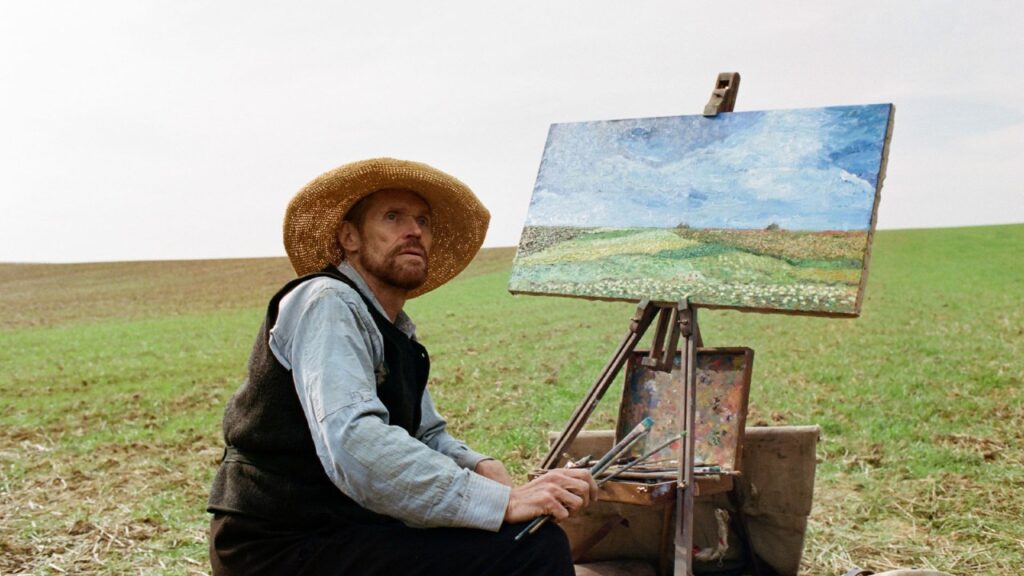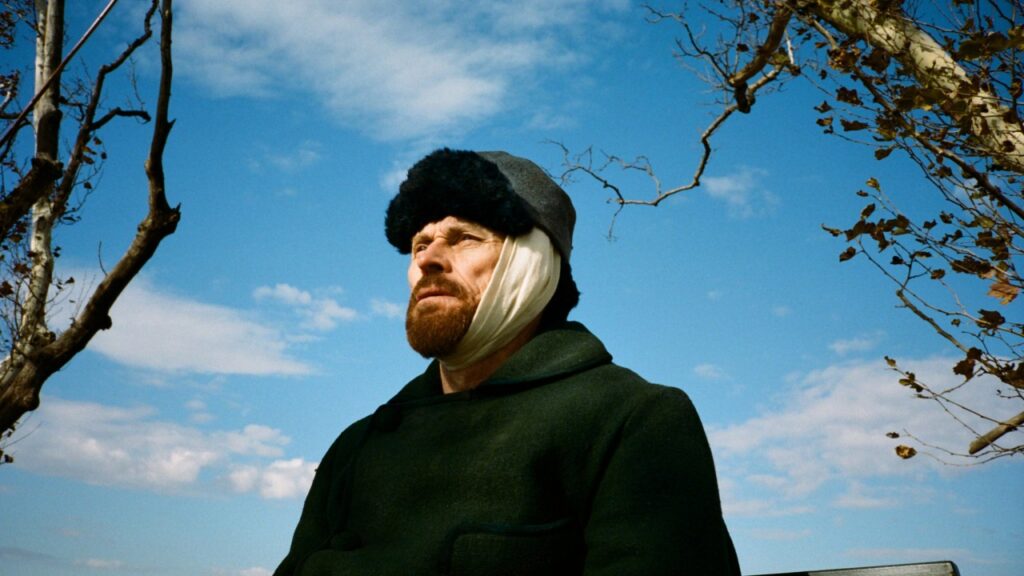‘At Eternity’s Gate,’ directed by Julian Schnabel and released in 2018, gives us a different way to look at the life of Vincent van Gogh. The film stars Willem Dafoe as van Gogh, bringing a quiet intensity to the character, while Rupert Friend, Oscar Isaac, Mads Mikkelsen, and Mathieu Amalric fill out the supporting roles. From the start, the movie asks us to consider van Gogh as a historical figure and a man who experienced the world uniquely. It shows us a version of him who is deeply curious, sometimes frustrated, and constantly searching for meaning through his art.
The film focuses on van Gogh’s later years in Arles and Auvers-sur-Oise, France. We follow him as he develops his work, interacts with fellow artists like Paul Gauguin, and struggles with his inner turmoil. The story also raises questions about the circumstances surrounding his death, suggesting it may have been an accident rather than an intentional act. This perspective allows us to think differently about what we thought we knew about his life and the challenges he faced. The narrative does not follow a traditional biopic format, allowing us to experience van Gogh’s journey in a more personal and layered way.
Seeing the World Through Willem Dafoe’s Van Gogh Eyes

One of the most notable aspects of At Eternity’s Gate is its visual approach, as Schnabel creates the film with a painterly style that mirrors van Gogh’s perspective. The cinematography by Benoît Delhomme captures landscapes and interiors with colors, textures, and compositions, letting us see the world as van Gogh might have seen it. We notice how light and color emphasize emotion and perception rather than realism. This approach makes the film feel like painting a portrait of his inner life, showing us what it meant for him to feel and observe in a completely different way.
Willem Dafoe’s performance is central to this experience. We see van Gogh as a man who is deeply passionate about his art, struggles with isolation, and is determined to express the truth he sees in the world. Dafoe brings a balance of vulnerability and intensity that makes us care about his journey and understand his frustrations and joys. The supporting cast also enhances the story. Rupert Friend as Paul Gauguin gives us a sense of van Gogh’s complicated relationships with other artists. Oscar Isaac, Mads Mikkelsen, and Mathieu Amalric fill roles that remind us of his wider world and the pressures he faced.
The themes of the film are thoughtful and complex. We are invited to consider isolation and its effect on creativity, the search for meaning in life, and the struggle for recognition and understanding. Van Gogh is portrayed not only as a tragic figure but as someone with insight into life and a way of seeing the world that few others could grasp. Even in the face of difficulty and misunderstanding, his dedication to painting gives us a sense of his resilience and commitment to expressing his vision.
Questions, Interpretations, and the Layers of Van Gogh’s Life

At the same time, the movie does not answer all our questions. By presenting the events leading to van Gogh’s death as potentially accidental, the film leaves room for us to interpret his life and choices differently. We are encouraged to think about his motivations, emotional state, and how he interacted with the world. The story shows us that there is no single way to understand a person as complex as van Gogh, and that his art continues to speak to us in ways that are open to interpretation.
The way At Eternity’s Gate blends visual storytelling, performance, and historical perspective reminds us that biographical films can do more than just recount facts. They can allow us to enter someone else’s experience and challenge the assumptions we bring with us. It gives us moments of reflection, frustration, beauty, and even humor, making van Gogh feel alive in a way that is both relatable and extraordinary.
We are left with images, feelings, and ideas that linger by the end. We have seen the landscapes, the people, and the emotions that shaped van Gogh’s final years. The movie does not tell us definitively what happened, encouraging us to continue discussing his life, work, and how he saw the world. In that way, At Eternity’s Gate gives us a layered and thoughtful experience, leaving us with questions and reflection. It is a portrait that invites us to look closer, think deeper, and see the world, at least for a moment, through the eyes of one of history’s most extraordinary artists.




